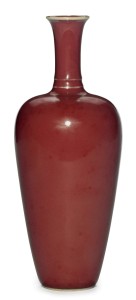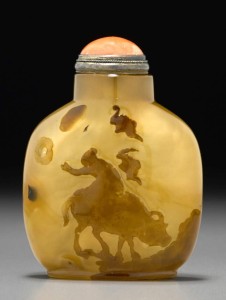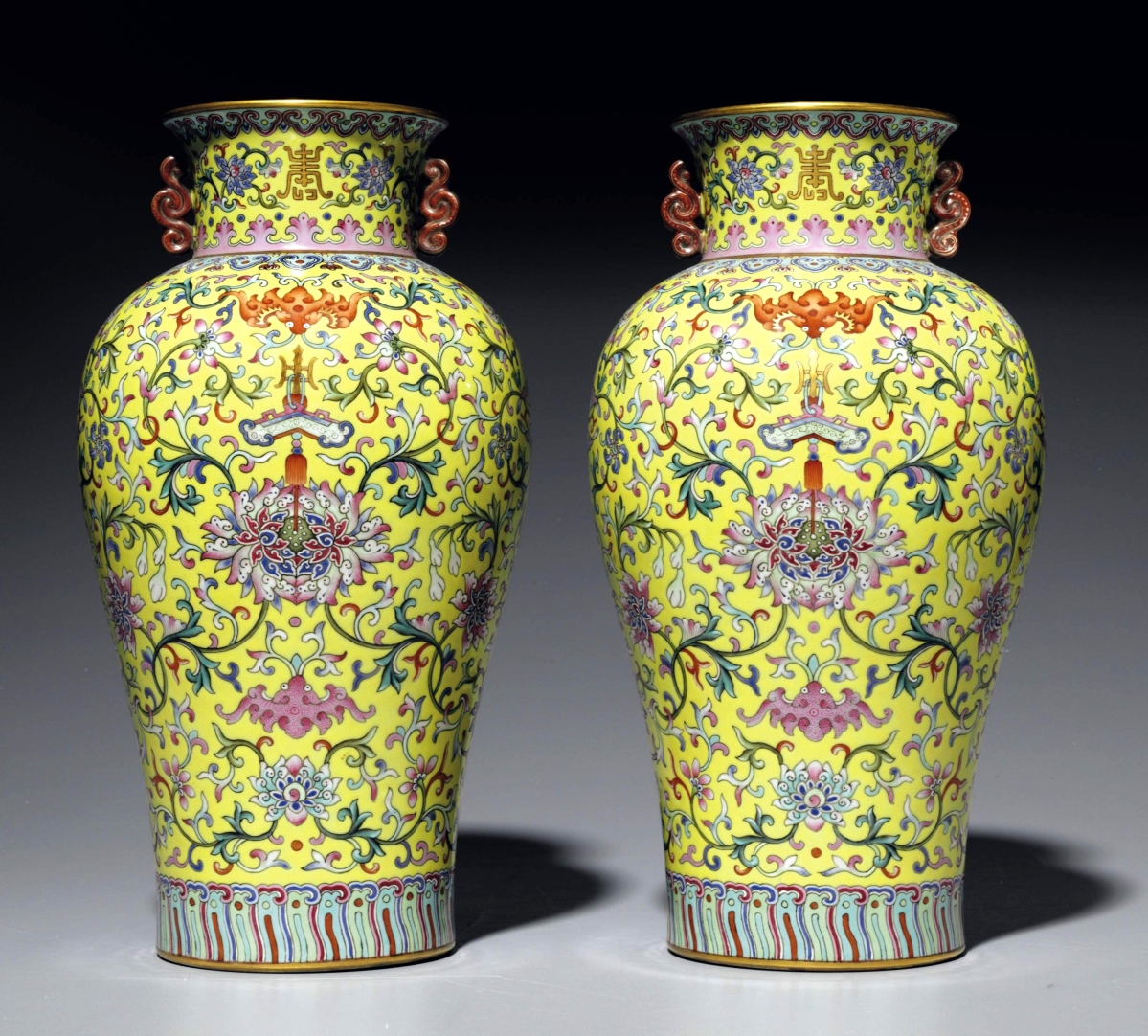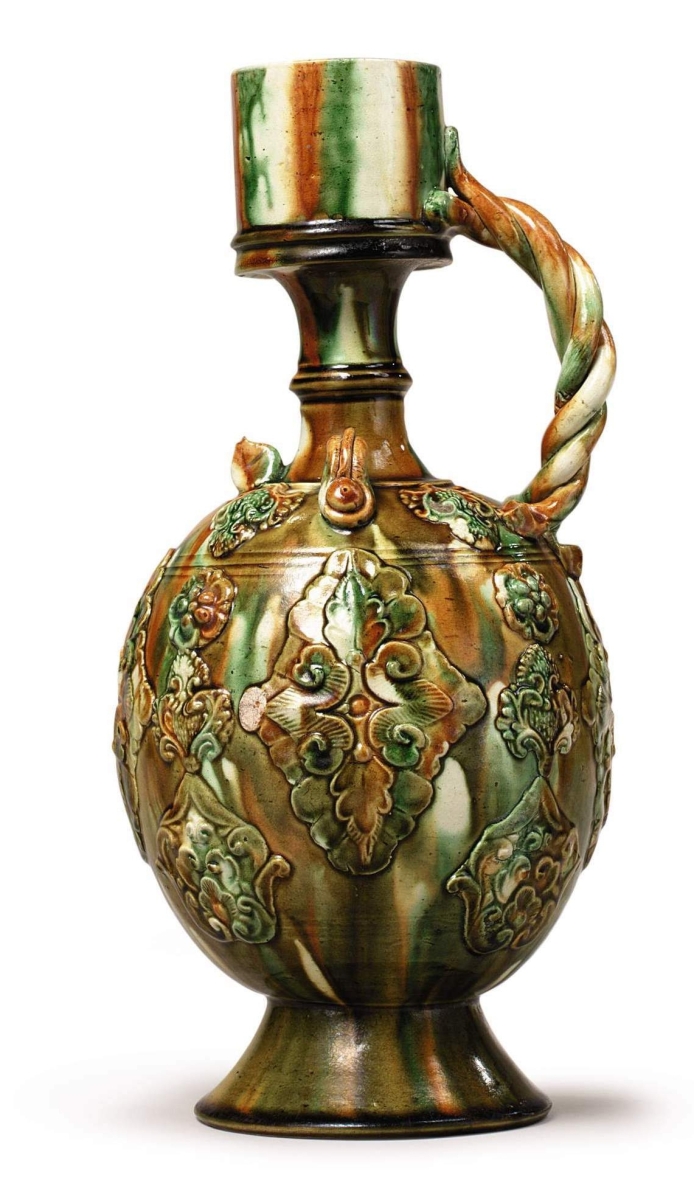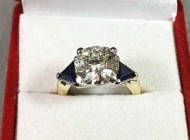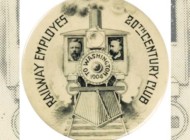NEW YORK CITY — The New York sales of Chinese and Asian paintings, calligraphy and works of art dominated Asia Week New York sales during the week of September 12–18, according to Art Tactic’s Raw Facts Newsletter #37. In total, it said, the sales value of the week’s 37 auctions came in 318.2 percent higher than the same week in 2015. On these pages are some of the highlights at the major auction houses.
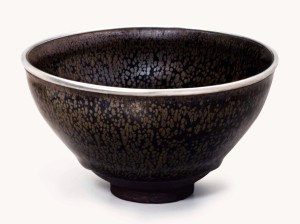
The rare “Oil Spot” Jian tea bowl from the Linyushanren collection sold for $11,701,000, setting a world auction record for a Song dynasty tea bowl and was the top lot of Asian Art in New York.
Asian Art Week At Christie’s Totals $58.6 Million
NEW YORK CITY — Christie’s concluded its Asian Art Week with a combined total of $58,591,063, achieved over four days of eight sales, September 13–16. The auctions saw deep bidding levels from Greater China across all categories especially for the Indian, Himalayan and Southeast Asian art sale.
Works of extreme rarity and importance were exemplified by the “Oil Spot” Jian tea bowl from the Linyushanren collection, which sold for $11,701,000, setting a world auction record for a Song dynasty tea bowl and the top lot of Asian Art in New York.
The dedicated sale Collected in America: Chinese Ceramics from the Metropolitan Museum of Art generated huge international interest and was 100 percent sold, the result of exceptional works with excellent provenance. Christie’s offered an additional selection of ceramics from the museum in an online auction that concluded on September 22.
Chinese paintings offered on September 13 totaled $2,676,438. The top lot for the sale was “Beauty” by Zhang Daqian (1899–1983), which realized $485,000.
Indian, Himalayan and Southeast Asian works of art added $3,818,375 to the total, with its star a monumental gray schist figure of a bodhisattva, Gandhara, Second–Third Century, which sold for $1,205,000.
On September 14, South Asian Modern and contemporary art finished at $3,803,750, its top lot “The White Veni” by Jehangir Sabavala (1922-2011), going out at $365,000.
Fetching $35,000 in Part 3 of the sale of the Ruth and Carl Barron Collection of Chinese snuff bottles was a carved gray and black jade snuff bottle, probably Suzhou School, 1760–1850. The overall sale totaled $881,375.
On September 15, the firm offered Collected in America: Chinese Ceramics from the Metropolitan Museum of Art, which totaled $12,088,125. The top lot was a rare peachbloom-glazed “Three-String” vase, which realized $2,045,000. The sale attracted a total of 200 online buyers and 51 percent of the lots were bought or directly underbid by online bidding.
A rare large huanghuali continuous horseshoe back armchair, Seventeenth–Eighteenth Century led the sale of the Flacks family collection. It realized $869,000 in the sale that totaled $3,756,000.
Finally, on September 16, Chinese ceramics and works of art concluded the series’ live auctions with a total of $13,161,000. It was led by a rare and enameled pair of yellow-ground famille rose vases, which realized $2,045,000.
Prices reported include the buyer’s premium. For information, 212-636-2000 or www.christies.com.
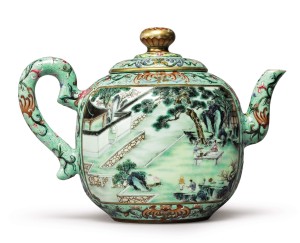
Rare turquoise-ground famille rose “Hui Mountain Retreat” teapot and cover, Qianlong seal mark and period, 6-7/8 inches, sold for $3.49 million.
Asia Week Sales At Sotheby’s Total $60.4 Million
NEW YORK CITY — Seven days of exhibition, three days of sales and four auctions of Chinese art drove Sotheby’s Asia Week total to $60,368,975. The strong results began with early Chinese art from the collection of dealer Sakamoto Goro — with 100 percent of lots selling — and continued into the various-owners sale of Chinese works of art.

‘This has been an unforgettable week — from the ‘white glove’ Sakamoto Goro sale to the $3.5 million Qianlong period teapot and the epic Papp collection evening auction, we have seen collectors’ hunger unabated for the finest works properly estimated and presented. With every sale exceeding the high estimate, the demand in this mature market remains robust.’ —Henry Howard-Sneyd, Sotheby’s chairman of Asian art, Europe and the Americas
Led by a rare turquoise-ground famille rose “Hui Mountain Retreat” teapot and cover from the Qianlong period, which surpassed its high estimate six times over, the auction of Chinese art totaled $12.2 million. Sotheby’s sales continued on September 14 evening with the four-and-a-half hour session of the Roy and Marilyn Papp Collection of Chinese paintings. In front of a packed salesroom, 94.3 percent of the lots sold, with the “Kangxi Emperor’s Southern Inspection Tour, Section of Scroll IV” fetching $9.5 million. Sotheby’s classical Chinese paintings department remained in the spotlight on September 15 with their various-owner sale totaling $13,375,250, again, above the high estimate.
Collectors continued to be drawn to the tastes of Sakamoto Goro, the renowned Asian art dealer from Japan. Sixteen works of art, with particularly strong representation from the Shang and Tang dynasty, were sought by bidders all over the world. Leading the selection of early Chinese art was a sancai-glazed ewer, which sold for $874,000 against an estimate of $500/700,000, and a rare bronze double owl-form ritual vessel that achieved $730,000.
Ceramics, sculptures and devotional works of art are only a sampling of the Chinese works of art offered in Sotheby’s seasonal auction. Competed for by clients in the room and on telephones, the Qianlong seal mark and period “Hui Mountain Retreat” teapot and cover, beautifully painted with a garden scene on one side and inscribed with an imperial poem on the other, soared above its high estimate of $500,000 to fetch $3.49 million. Noteworthy prices were also obtained for a Tibeto-Chinese gilt-bronze figure depicting Ngawang Lobsang Gyatso, Dalai Lama V, which fetched $1.51 million, and a pair of rare wucai and doucai “Dragon and Phoenix” bowls, Yongzheng marks and period, selling for $874,000, more than ten times its high estimate.
The inaugural evening sale of Chinese paintings in New York was a momentous occasion, with 115 lots sold over four-and-a-half hours. This private American collection, with many of the works fresh to the market, was pursued by bidders around the world. The top lot of the sale was the “Kangxi Emperor’s Southern Inspection Tour, Section of Scroll IV.” Following a 15-minute bidding war, this depiction of the Kangxi emperor’s visit to the southern regions of China realized $9,546,000. Interest was sustained throughout the sale, with as many as seven bidders competing for Wang Yuanqi’s “Landscape of Yushan,” which finally sold for $2,110,000.
Offerings of classical Chinese paintings continued on September 15 over two sessions. The sale was led by Zhang Ruitu’s “Eighteen Luohan,” an album of 20 leaves. Chased by four determined collectors, in the room and on the telephone, these paintings of ink and color on paper sold for $2.23 million. Zhu Xiaochun’s “Mount Liu” also made a remarkable price; estimated at $20/30,000, this handscroll from the Eighteenth Century soared to $910,000.
Prices reported include the buyer’s premium. For information, www.sothebys.com or 212-606-7000.
Asian Art Sales At Bonhams Achieve Strong Results
NEW YORK CITY — A remarkable week of Asian art auctions at Bonhams included four sales of Chinese, Japanese and Korean art, totaling more than $7 million and impressive sell-through rates. The firm’s Asian art departments presented three Chinese art sales, one Japanese and Korean art sale and a preview exhibition of Bonhams’ inaugural Himalayan art auction in Hong Kong.
On September 12, the Asian sales kicked off with A Taste for the Remarkable: The John and Celeste Fleming Collection of Chinese Furniture and Works of Art. The 20-lot single-owner sale, composed of Sixteenth–Eighteenth Century huanghuali and zitan wood furniture, as well as early Chinese metalwork, brought in a total of $3.9 million.

“We are delighted to open Asian Art week with such an exciting group of sales at Bonhams. Our Chinese sales achieved top prices for Ming furniture, and our Japanese and Korean auction saw steady prices for Meiji metalwork and achieved a top price for a Park Sookeun painting. Bonhams again demonstrated that highly curated sales of objects with notable provenance bring consistent strong results in this competitive market.’ —Dessa Goddard, Bonhams head of the US Asian art group
The Flemings were devoted patrons of Asian art in Denver and actively participated with important organizations, such as the Asian Performing Arts Council, Denver Art Museum and Opera Colorado.
A highlight of this collection was a rare huanghuali four-poster bed, late Ming dynasty. It sold for three times its high estimate at $1,385,000. The Flemings purchased their furniture in the mid- to late-1990s from Grace Wu Bruce, a dealer of Sixteenth–Seventeenth Century furniture. Under her guidance, they carefully built a collection of Ming furniture that graced their elegant Japanese-style home.
Other significant lots included a huanghuali corner leg side table, Tiaozhuang, Seventeenth Century, $461,000; a pair of huanghuali low back arm chairs, Meiguiyi, Seventeenth/Eighteenth Century, $413,000; and a huanghuali sloping-stile cupboard, Yuanjiaogui, late Sixteenth/Seventeenth Century, $353,000.
The sale of Chinese snuff bottles featured 140 lots of jade, glass and inside-painted bottles, sourced from private collections in the United States. It included a grouping from the collection of the late Elsa Glickman, who passionately studied, collected and wrote about Chinese snuff bottles. Each bringing $13,750 were a shadow agate example, 1750–1850; a rare inscribed coconut shell snuff bottle, 1800–1880; and an embellished white and russet jade work, the bottle: 1820–1920, embellishment: Tsuda family, Kyoto, Japan, Twentieth Century. Also, a shadow agate snuff bottle, 1740–1860, brought $12,500.
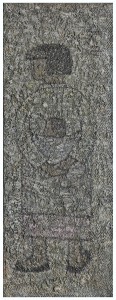
The Japanese and Korean works of art sale was led by Korean painter Park Sookeun’s (1914–1965) “Gidalim (Waiting)” at $605,000.
Chinese works of art and paintings included calligraphy, silk textiles, paintings, archaic and later bronze vessels, jades, scholar’s rocks and a group of huanghuali furniture from the prominent collection of Mark Pratt, totaling 144 lots.
Leading this auction was a pair of Eighteenth Century white jade bird boxes, which sold for $305,000. It is likely that the elegantly carved birds made their second appearance at a New York auction on September 12, the first being more than 100 years ago at the “Remarkable Collection of the Imperial Prince Kung” at the American Art Galleries and organized by the dealer Yamanaka Sadajiro who acquired the entire collection of the grandson of the Daoguang Emperor in the summer of 1912, immediately following the fall of the Qing dynasty.
Another standout lot was a set of three porcelain plaques depicting birds and flowers by Liu Yucen (1904–1969), which achieved 40 times its high estimate, selling for $245,000. The porcelain plaques in vertical rectangular format depicted three roosters inspecting an insect among yellow peonies, another illustrating red-feathered birds among plum blossoms and bamboo by a waterfall, and the last showing mandarin ducks amid bamboo and lotus. Each was signed and sealed by Liu Yucen and mounted in a wood frame.
With 319 lots, the Japanese and Korean works of art sale was led by Korean painter Park Sookeun’s (1914–1965) “Gidalim (Waiting)” at $605,000. Sookeun made everyday life in postwar Korea his main subject matter of his works. It is the celebration of a lost era in Korean history that may explain the great popularity of his work today, when such scenes evoke feelings of nostalgia among collectors. His body of work is thought to be quite small, perhaps no more than 400 paintings. His career was cut short by his premature death from cirrhosis of the liver at the age of 51 in 1965.
Prices reported include the buyer’s premium. For information, www.bonhams.com or 212-644-9001.

